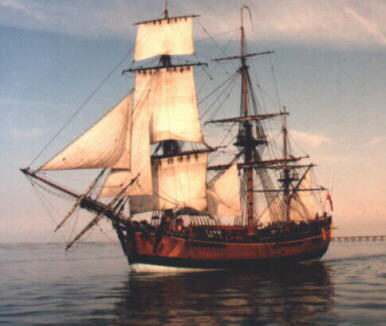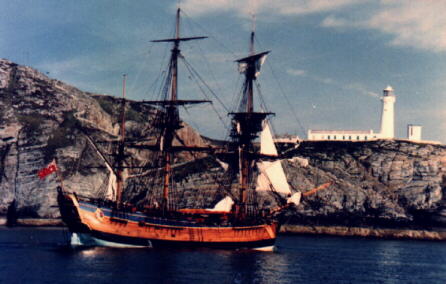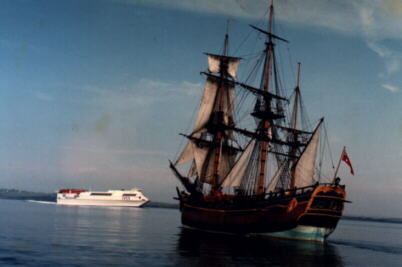Visiting HOLYHEAD – a replica of Captain James Cook’s

The Endeavour is one of the most famous ships in History. She was immensely strong, of Scandinavian or ‘cat built’ design, bluff-bowed, shallow-draft and a slow vessel. Her construction allowed her to take to ground with less damage than most vessels, and her own crew could effect repairs. Her first voyage 1768 – 1771 had a dual role – the first, a scientific expedition (towards which King George 111 gave £4,000) and the second to find a Southern Continent if one existed. The crew (few over 30 years of age) were 94 in all – including 11 members of the scientific party. The party was led be Joseph Banks – a rich young man of the Royal Society. The expedition is said to have costhim £10,000 – a great deal of money at the time. Also in his party were Charles Green, Dr. Solander, H.Sporing, A. Buchan and S. Parkinson. Captain Cook’s instruction were to proceed via Cape Horn to King George’s Island (Tahiti) to observe the transit of Venus on 3rd June 1769 as predicted by Astronomer Royal – Edmund Halley. When this work was complete, he was instructed to open secret and sealed instructions which ordered him to discover whether the Pacific contained a continent to the south of Tahiti and whether Tasman’s New Zealand was part of this unknown continent. Cook stated “the discoveries made in this voyage are not great” but in the sphere of Natural History, Joseph Barks and Dr. Solander made many valuable discoveries and returned laden with the greatest treasure. Captain Cook had at last shown the world how ships could be at sea for long periods of time with out the devastating ravages of diseases like scurvy, and although there were deaths aboard, they were due to diseases caught from visiting islands. He writes that his crew were “Cheerful and alert and did Honour to British Seamen”.


